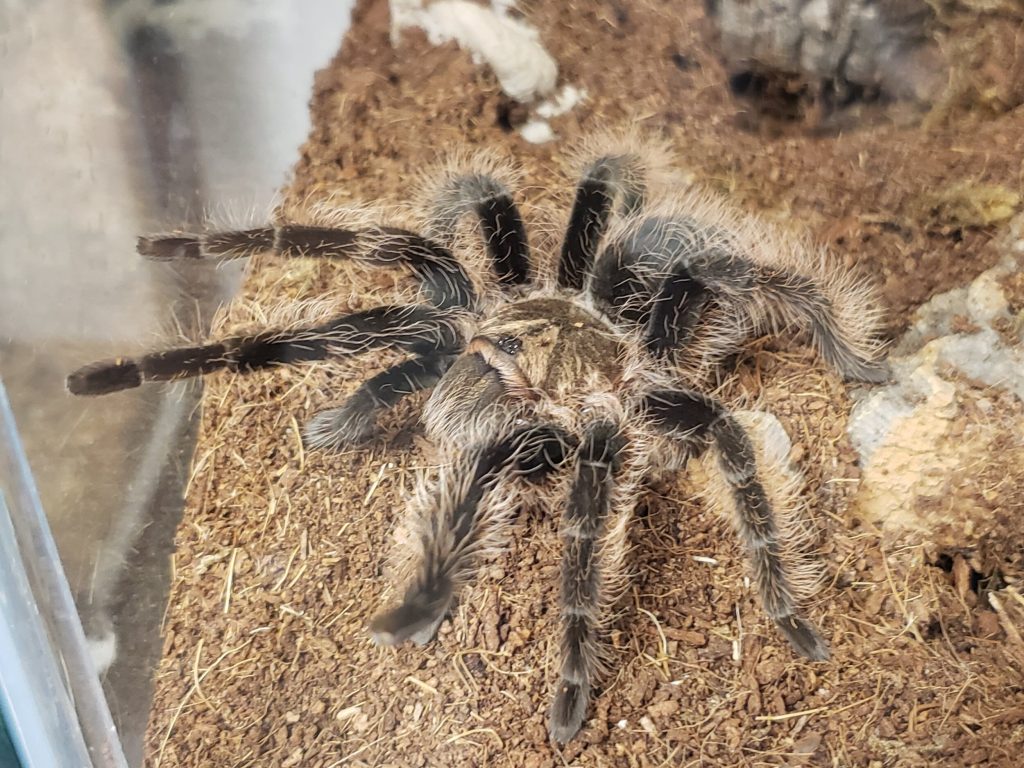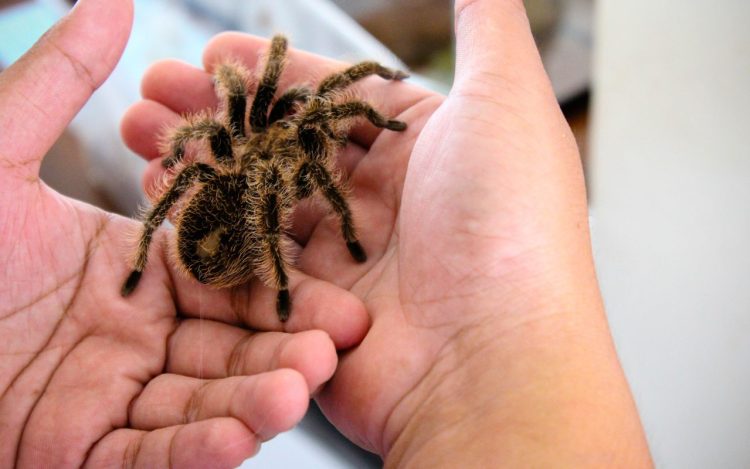Creating a Home for the Honduran Curly – haired Tarantula
The Ideal Habitat
To raise a Honduran Curly – haired Tarantula, one must provide a suitable living environment. A large glass or plastic container serves as an excellent enclosure, ensuring ample space for the spider to move around. Place an appropriate amount of soil and branches inside the container to mimic its natural habitat. This allows the tarantula to feel at home and exhibit its natural behaviors.
Maintaining the Right Temperature and Humidity
The Honduran Curly – haired Tarantula thrives in a tropical climate, making temperature and humidity control crucial. Keep the temperature within the range of 24 – 28 degrees Celsius and the humidity around 70 – 80%. You can use a humidifier, misting, or water dishes to increase humidity levels. This stable environment is essential for the tarantula’s well – being.
Feeding Your Tarantula
These tarantulas are carnivorous, feeding on insects. Offer live insects such as crickets, locusts, or small lizards as food. Ensure that the food is fresh, clean, and of an appropriate size for the spider’s mouthparts. A proper diet is vital for the tarantula’s growth and health.
Handling with Caution
Honduran Curly – haired Tarantulas can sometimes display aggression, especially when disturbed or threatened. When handling the spider, exercise great care. It’s best to avoid direct contact and use tools instead. This minimizes the risk of getting bitten and ensures the safety of both you and the tarantula.
Observing and Caring for Your Pet
Regularly observe the behavior and physical condition of your Honduran Curly – haired Tarantula. This helps in detecting any signs of illness or distress early. Also, keep the enclosure clean by regularly cleaning it. Raising these tarantulas requires thorough preparation and research. If you’re a novice, seek guidance from professional spider keepers or veterinarians.

The Intricacies of Tarantula Care
Feeding Tips for Different Life Stages
When it comes to feeding, different life stages of the tarantula may have specific requirements. For young tarantulas, you can feed them small pieces of food. You can even cut up mealworms before feeding. Since they are nocturnal, it’s best to feed them at night and check the next day. If the food is uneaten, remove it and offer new food.
Controlling the Environment
Controlling the environment is key to successful tarantula care. Temperature should be maintained within a suitable range. If possible, keep it around 25 – 26 degrees Celsius. Humidity also matters, especially during molting when the tarantula requires more water. Pay close attention to these factors and make adjustments as needed.
Special Considerations for Young Tarantulas
Young tarantulas have more delicate needs. When you first get a young tarantula, give it some time to settle in. For the first three days, don’t disturb it. Set up a proper hiding place and put a little water in the water dish. When feeding young tarantulas with mealworms, it’s important to crush the head of the mealworm to prevent it from burrowing into the soil.
The Unique Honduran Curly – haired Tarantula
An Introduction to the Species
The adult Honduran Curly – haired Tarantula has a leg span of 16 – 17 centimeters. The carapace of the adult is golden – yellow, and its body is generally brown – black, covered with a unique layer of golden – yellow curly hairs. Perhaps among all tarantula species, only they possess these distinctive curls. Due to their relatively easy breeding and large production, the price of their young is relatively inexpensive.
Habitat and Adaptability
Unlike some of its relatives from drier desert areas, the Honduran Curly – haired Tarantula hails from the tropical rainforests of Central America. When setting up its enclosure, consider using slightly moist peat, coconut fiber bricks, or clay as substrate. They are less aggressive towards humans, and their urticating hairs have little effect on us. With their strong adaptability, they are an excellent choice for novice spider keepers.























































